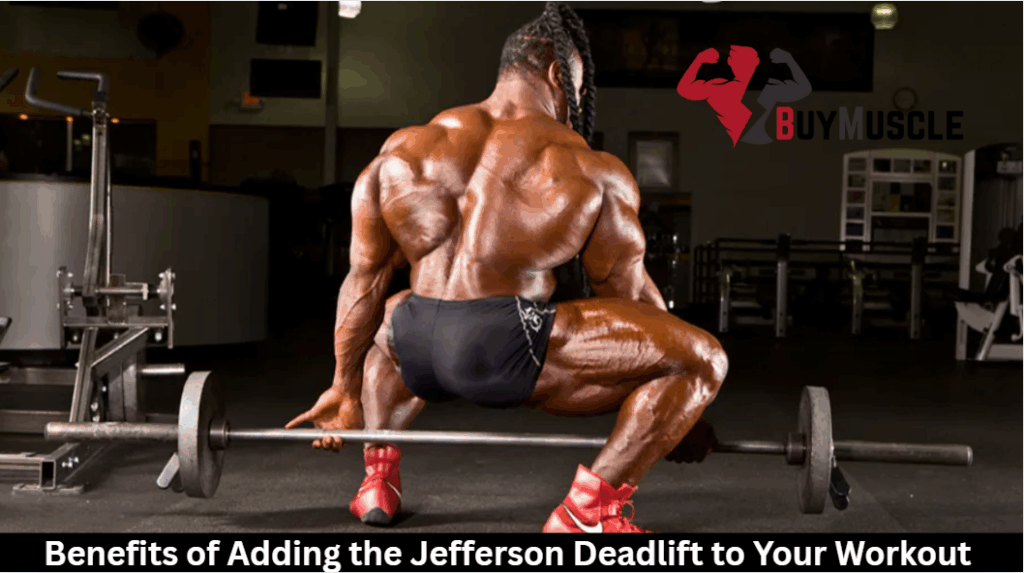The Jefferson deadlift targets often-neglected muscles, including obliques, adductors, and glutes, through its unique stance. You’ll correct left-right imbalances, develop superior core stability, and enhance rotational strength for better athletic performance. This unconventional lift creates a novel stimulus that breaks through plateaus when traditional deadlifts stop producing results. By challenging your body in multiple planes of motion, you’ll build functional strength that translates to sports and daily activities.
Discover why this forgotten exercise deserves a place in your routine.
Targets Neglected Muscle Groups for Complete Development
While traditional deadlifts primarily target the posterior chain, the Jefferson deadlift activates muscle groups that often remain underdeveloped in conventional lifting programs. The staggered stance creates rotational demands that engage your obliques and deep core muscles, promoting greater core stability than standard deadlift variations.
You’ll notice enhanced glute development from the Jefferson deadlift’s unique hip positioning, which forces both sides to work independently. This asymmetrical loading pattern strengthens stabilizing muscles that bilateral exercises typically miss, addressing muscular imbalances that could lead to injury.
The Jefferson deadlift also recruits adductors and abductors more intensely than conventional deadlifts, enhancing hip mobility and strength in multiple planes of motion. This benefit translates directly to athletic performance and everyday movement patterns.

Corrects Strength Imbalances Between Left and Right Sides
The greatest benefit of the Jefferson deadlift is revealing and correcting strength discrepancies between your left and right sides. It is a partially unilateral exercise – you do each side of your body independently while maintaining proper spinal alignment, unlike conventional deadlifts.
See if one hip is stuck or if your dominant side compensates during traditional strength training. Such awareness helps prevent injuries and optimize performance. You correct these imbalances as you train. Start with light weights for technique work, then gradually build up to a structured progression as your body gets used to the weights.
The Jefferson deadlift doesn’t just build strength. It builds balanced, functional strength that transfers to everyday movements and other lifts.

Enhances Core Stability and Rotational Strength
The Jefferson deadlift’s staggered stance creates a powerful training environment for developing core stability beyond what conventional deadlifts offer. Your body must resist rotation while lifting, forcing your obliques and deep stabilizers to engage intensely throughout the movement. This anti-rotational strength translates directly to functional fitness and everyday activities that require twisting or reaching.
Unlike conventional deadlifts that primarily work your core in one plane, the Jefferson’s unique positioning activates your entire midsection from multiple angles. This thorough core activation contributes greatly to lower back health by strengthening the muscular corset that protects your spine.
You’ll develop a resilient core that not only performs better but serves as proactive safety and injury prevention for both athletic endeavors and daily movements.

Creates Greater Carryover to Athletic Performance
Because of its asymmetrical stance and rotational demands, the Jefferson deadlift mimics real-world movement patterns far better than traditional deadlifting variations. When you maintain proper exercise form during this unique weightlifting variation, you’re developing the same multi-plane strength that sports require. Unlike conventional deadlifts, which primarily build straight-ahead power, the Jefferson builds leg strength in multiple directions.
The increased quad engagement from the staggered stance directly translates to better acceleration, jumping, and change-of-direction abilities. Many athletes find that adding this powerlifting accessory to their training regimen improves their performance more noticeably than conventional deadlifts alone.
The carryover is particularly evident in sports requiring rotational power, like golf, baseball, and martial arts, where force generation comes from coordinated total-body movements rather than isolated strength.
Breaks Through Training Plateaus With Novel Stimulus
When traditional deadlifts no longer yield significant strength gains, incorporating the Jefferson deadlift can provide the novel stimulus your muscles need to adapt and grow. Your body becomes efficient at movements it regularly performs, which eventually leads to plateaus. The Jefferson’s unique barbell positioning forces your muscles to work in unfamiliar patterns, triggering new neural adaptations and growth.
You’ll challenge your grip stability differently than in conventional lifts because your hands aren’t evenly aligned. This asymmetrical loading pattern engages stabilizing muscles that might be underdeveloped from traditional deadlifts. The varied stance also redistributes tension throughout your posterior chain in new ways, breaking the movement patterns your body has become accustomed to.
Try rotating the Jefferson deadlift into your program for 4-6 weeks to overcome stubborn plateaus.
Frequently Asked Questions
How Does the Jefferson Deadlift Compare to Sumo and Trap Bar Variations?
Unlike sumo’s wider stance and trap bar’s neutral grip, the Jefferson deadlift forces you to straddle the bar, creating more rotational demands on your core while still reducing lower back stress like these alternatives.
Can the Jefferson Deadlift Be Performed With Dumbbells or Kettlebells?
You can certainly do Jefferson’s deadlifts with dumbbells or kettlebells. They’re great alternatives that offer similar benefits with more freedom of movement and potentially less setup complexity.
How Often Should I Include Jefferson Deadlifts in My Weekly Routine?
Include Jefferson deadlifts 1-2 times weekly in your routine. Start with one session as you learn proper form, then add a second day when you’re comfortable. Allow 48-72 hours between sessions for recovery.
Does Stance Width Affect Which Muscles During the Lift?
Yes, stance width greatly affects muscle emphasis. A wider stance targets your inner thighs and glutes more, while a narrower stance shifts focus to your quads and outer hip muscles during the Jefferson deadlift.
Are There Specific Mobility Prerequisites Before Attempting This Lift?
Yes, you’ll need adequate hip mobility, hamstring flexibility, and ankle dorsiflexion. Work on hip hinge patterns and groin flexibility first. Don’t attempt the Jefferson deadlift with restricted mobility in these areas.








